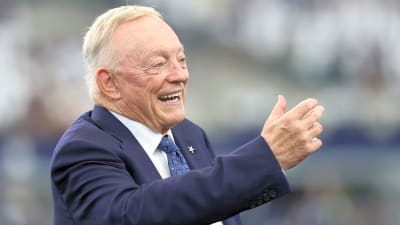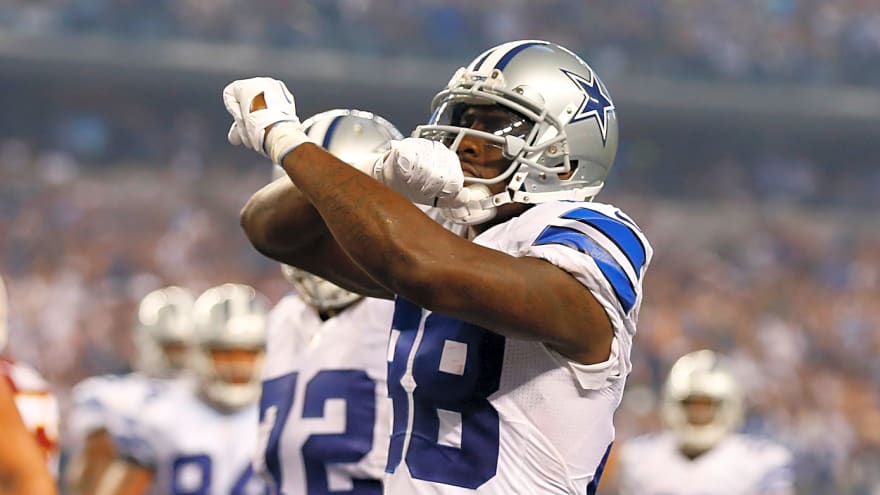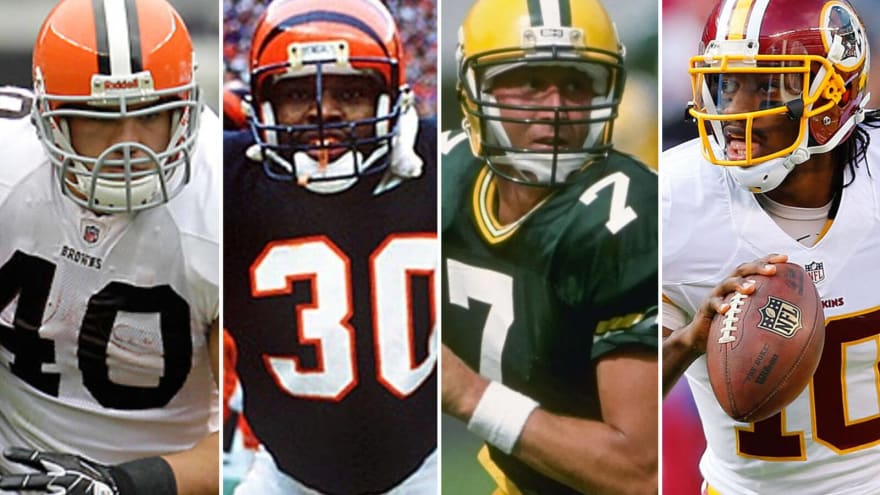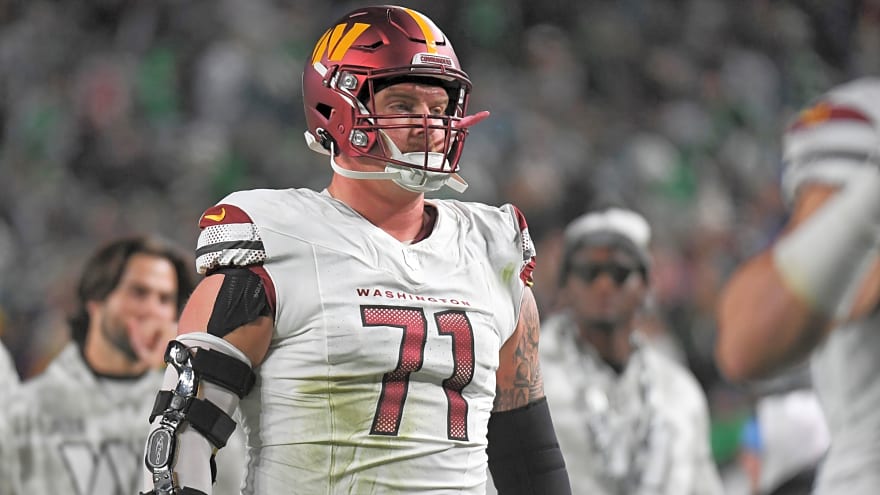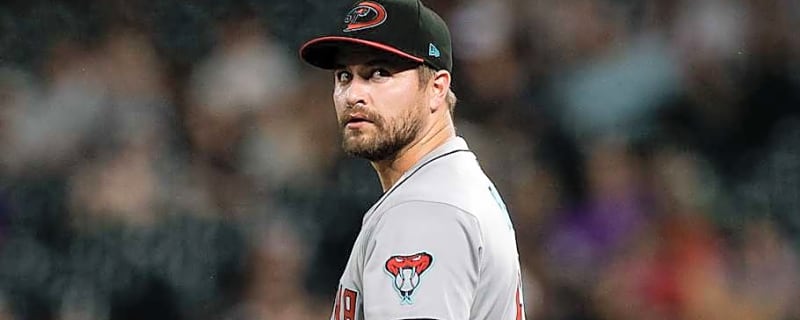
The Dallas Cowboys’ running back room in 2025 isn’t exactly star-studded, but with the right approach, it could become a strength instead of a liability.
The best path forward?
Lean on a veteran for early-down, between-the-tackles work, and unleash rookie Jaydon Blue as a change-of-pace weapon who can burn defenses both as a runner and as a receiver out of the backfield.
This 1-2 punch approach would not only keep defenses guessing, but also allow the offense to preserve legs and play to each player’s strengths.
The Cowboys don’t have a dominant lead back like they did in the Ezekiel Elliott glory days, but what they do have is the ability to diversify their ground game in a modern, matchup-driven league.
Jaydon Blue: Rookie Lightning?
Jaydon Blue, the rookie out of Texas, brings an explosive element the Cowboys have sorely lacked.
While he may not be built to handle 20+ carries a game, his agility, acceleration, and soft hands out of the backfield make him the perfect complement to a traditional power back.
Blue has the quick-twitch burst to bounce runs outside, the vision to exploit cutback lanes, and the receiving chops to line up wide or run option routes out of the backfield.
The Cowboys haven’t had a legitimate pass-catching threat at running back since Tony Pollard before his injury zapped his burst, and Blue can fill that void and then some.
To get the most out of Blue, Dallas must be selective with his usage. Let him attack worn-down defenses on 2nd & medium or 3rd & short.
Let him motion out wide and abuse linebackers in coverage. Use him as a chess piece, not a battering ram.
Veteran Backs: Who is the Thunder?
To handle the dirty work on early downs, the Cowboys are staging a camp battle between former Broncos back Javonte Williams and former Eagles and Panthers runner Miles Sanders.
While both backs are trying to resurrect their careers, there’s only room for one veteran bruiser in this backfield.
Williams, if healthy, offers more upside.
He runs with violence, keeps his legs churning through contact, and has flashed decent pass protection when called upon.
Sanders, on the other hand, is shiftier but hasn’t looked like his 2022 self since landing in Carolina.
His vision has been spotty, and injuries have sapped his explosiveness.
The Cowboys can’t afford to carry both, especially when roster spots are tight and neither plays special teams.
Expect a fierce battle in training camp, but barring injury, Williams seems to have the inside track to make the roster and lead the early-down rotation.
Rookie Thunder?
While the conversation has centered around veterans like Williams and Sanders, don’t overlook rookie Phil Mafah.
The bruising back from Clemson wasn’t drafted just to hold a clipboard.
There’s a legitimate chance he leapfrogs both veterans to become the Cowboys’ lead back on early downs.
At 6’1” 230 pounds, Mafah brings the kind of size, physicality, and no-nonsense running style this backfield desperately needs.
He’s got fresh legs, a powerful frame built for short-yardage and clock-killing situations, and enough wiggle to hit the occasional big play.
He also showed improved vision and patience during his final year in college, suggesting his game is maturing at the right time.
Mafah’s biggest advantage? Upside.
He doesn’t come with the wear-and-tear or salary baggage of the veterans.
If he flashes during preseason, and he’s already turning heads in minicamp, the coaching staff may decide it’s better to let the rookie take the reins than rely on a reclamation project.
“Deuces” Vaughn
While fans were initially excited about the pint-sized playmaker Deuce Vaughn, the dream seems to be over before it ever truly began.
Vaughn struggled mightily in limited action as a rookie, showing neither the power nor the burst needed to overcome his diminutive frame.
Worse yet, he doesn’t contribute on special teams, a death sentence for depth players on any NFL team.
That special teams role is locked up by KaVontae Turpin, a Pro Bowl return man who brings elite speed and open-field danger.
There’s simply no redundancy on this roster for another small, gadgety back who doesn’t add value elsewhere.
Deuce Vaughn was a good story. That story is over.
RB by Committee
By adopting a multi-pronged committee with Mafah or Williams or Sanders handling the tough inside work and Blue providing dynamic play making, the Cowboys can avoid overexposing any single back while maximizing efficiency.
This isn’t a backfield built for a bell-cow. It’s a backfield that can succeed through role definition, matchup exploitation, and strategic usage.
In 2025, Dallas doesn’t need a superstar running back.
They just need the right combination of thunder and lightning.
More must-reads:
- DeMeco Ryans sounds displeased with officiating after C.J. Stroud concussion
- Mike Vrabel responds to accusation that Patriots simulated Falcons' snap on key fourth-quarter play
- The 'NFL Passing YPG leaders' quiz
Breaking News
Trending News
Customize Your Newsletter
 +
+
Get the latest news and rumors, customized to your favorite sports and teams. Emailed daily. Always free!
TODAY'S BEST

Dolphins considering drastic Tua Tagovailoa move
Tua Tagovailoa's future as the Miami Dolphins' starting quarterback may be on shaky ground. Through nine starts, Tagovailoa is 2-7 and has posted a below-average 43.6 QBR. If his play doesn't improve soon, the team may make a drastic move. Dolphins are reportedly considering benching Tua Tagovailoa In a story published Sunday, NFL Media insider Ian Rapoport reported the Dolphins could bench Tagovailoa in favor of Zach Wilson or rookie Quinn Ewers later this season. Rapoport added, "Tagovailoa's play would really have to fall off for Miami to turn to either Wilson or Ewers." However, the QB may be nearing that point. In his past four games, the 2020 first-round pick has tossed seven of his 11 interceptions. Wilson and Ewers have both filled in for Tagovailoa during blowout losses this season. Former New York Jets flop Wilson completed 5-of-8 passes for 32 yards in a 33-8 Week 1 loss to the Indianapolis Colts. Ewers, a seventh-round pick out of Texas, finished 5-of-8 passing for 53 yards in a 31-6 Week 7 loss to the Cleveland Browns. What would happen if the Dolphins benched Tua Tagovailoa? The Dolphins' benching of Tagovailoa would signal they want to move on from the QB, but that would be challenging. In July 2024, the former Alabama star signed a four-year, $212.4M contract extension with $167.1M guaranteed. The deal is now an albatross for the franchise. According to Rapoport, Miami would incur an NFL-record $99.2M cap hit if it released him this offseason. The Dolphins could designate him as a post-June 1 cut to spread the amount out over the next two seasons ($67.4M in 2026 and $31.8M in 2027). The Denver Broncos did the same in March 2024, after taking an $85M cap hit following the release of former starting QB Russell Wilson. To avoid these expenses, the Dolphins could consider trading Tagovailoa with a post-June 1 designation. A pre-June 1 trade would leave $45.2M in dead money against Miami's salary cap. But a declining and injury-prone Tagovailoa shouldn't attract many suitors. The sixth-year veteran has had four documented concussions in his NFL career. The Dolphins should hope Tagovailoa gets his act together. Per Over The Cap, his deal runs out of guaranteed salary in 2027. Until then, they're likely stuck with the 27-year-old passer.

Cowboys Announce Exciting Development on Saturday
Dak Prescott and the Dallas Cowboys are 3-4-1 with a Week 9 matchup against the Arizona Cardinals on "Monday Night Football." They're looking to bounce back after losing to the Denver Broncos 44-24 last week. Prescott has been explosive through the first eight games. He has thrown for 2,069 yards, 16 touchdowns, five interceptions and a 101.6 passer rating while completing 70.3% of his passes. The Cowboys have put together one of the most explosive offenses in the NFL, ranking second in total yards per game (384.1) and second in points per game (30.8). The unit may soon be getting reinforcement, including from center Cooper Beebe. Beebe started the first two games of the season for the Cowboys. However, he hasn't played since suffering a lateral ankle sprain and foot injury in Week 2 against the New York Giants. On Saturday, though, according to Nick Harris of the Fort Worth Star-Telegram, head coach Brian Schottenheimer announced Beebe is on track to play against the Cardinals. "Cowboys HC Brian Schottenheimer says C Cooper Beebe is on track to play against the Arizona Cardinals on Monday night," Harris reported. "Hasn’t played since week two when he suffered a lateral ankle sprain and foot injury." After being selected in the third round of the 2024 NFL Draft, he has become a consistent figure on Dallas' offensive line. As a rookie last season, he started 16 games, earning a Pro Football Focus overall grade of 65.4. Filling in for Beebe has been fourth-year veteran Brock Hoffman. He's recorded 415 snaps at center this year, committing two penalties and allowing one sack and ranking 29th out of 33 centers with a grade of 56.2. The Cowboys' offensive line has protected Prescott very well. They've allowed just 10 sacks, which is tied for the fourth-least in the NFL. Beebe's return could solidify one of the NFL's top offensive lines, giving Prescott more time and protection in the pocket. Kickoff between the Cowboys and Cardinals is 8:15 p.m. ET Monday at AT T Stadium, airing on ABC and ESPN.

Eagles geared up for another Super Bowl run after Jaelan Phillips trade
The Philadelphia Eagles are already Super Bowl contenders, but that's not stopping general manager Howie Roseman from bolstering his roster before the trade deadline on Tuesday at 4 p.m. ET. On Monday, the Miami Dolphins sent linebacker Jaelan Phillips to the Eagles for a 2026 third-round pick (via ESPN's Adam Schefter). It's the third defensive trade Roseman and company have made in the past week. They already improved their secondary by acquiring cornerback Jaire Alexander from the Baltimore Ravens and CB Michael Carter II from the New York Jets. How Jaelan Phillips trade benefits Eagles Trading for 26-year-old Phillips should help the Eagles (6-2) solve one of their bigger defensive problems: the ability to generate pressure consistently. Per Pro Football Reference, Philadelphia is tied for 19th in the NFL in pressure rate (19 percent). It also has 16 sacks, tied with the Las Vegas Raiders (2-6) for 23rd in the league. Phillips had just three sacks through his first nine games with Miami, but he's still a quality pass-rusher. Pro Football Reference has credited him with 18 pressures this season, tied with Denver Broncos LB Nik Bonitto and Pittsburgh Steelers LB T.J. Watt for the 12th most in the league. That's great company for Phillips to be in. Both of those star defenders are Defensive Player of the Year candidates. As of Monday, DraftKings Sportsbook gives Bonitto +850 odds to win the award and Watt +3500 odds to capture it. Star Philadelphia LB Nolan Smith Jr. is expected to return from a triceps injury in Week 10 against the Green Bay Packers. He last played in Week 3 against the Los Angeles Rams. His return and the Phillips trade may now put the Eagles defense — which ranks 19th in the league in points allowed (23.1) — in a position to hit its stride. Even if their team is winning, top GMs, like two-time Super Bowl champion Roseman, continue to find ways to strengthen their clubs. He's likely done that again by landing Phillips.

Maple Leafs’ David Kampf Update After Comments to Marlies Players
Toronto Maple Leafs forward David Kampf has reportedly left the team’s AHL affiliate, and NHL insider Elliotte Friedman offered an update on the situation Monday morning. Speaking about the situation on the most recent 32 Thoughts podcast, Friedman shared that Kampf apparently made it clear to other Toronto Marlies players that he was done. As per his report, the disgruntled Maple Leafs forward left his teammates with the impression that he intended to terminate his contract. Furthermore, Friedman noted that Kampf’s absence from the Leafs’ lineup is not performance-related; rather, it stems from salary and roster constraints that currently prevent the team from accommodating him. Friedman noted: “I don’t know exactly what was said or how it was communicated, but Kampf did leave players with the Marlies with the impression that he was going to terminate his contract… He’s not out of the Leafs lineup because he’s not good enough, it’s because they can’t fit his salary and roster spot in right now. We’ll see how this plays out over the next few days. I certainly understand his frustration, and I think he made it clear the status quo just wasn’t good enough for him.” Kampf is annoyed by his situation, and the Maple Leafs are working to trade him. Unfortunately, the Leafs can’t find a taker for his contract. It has left Kampf feeling like he has little choice but to take the next steps available to him, which could include exploring opportunities elsewhere on a lower AAV with another NHL club. He and his agent must believe that if his cap hit weren’t what it is, an NHL franchise would give him a look and a chance to prove he’s worth the investment. Friedman suggested that the fact all of this has gone public might actually work to Kampf’s advantage, allowing him to gauge his market and might not have to take a hugely reduced deal.


